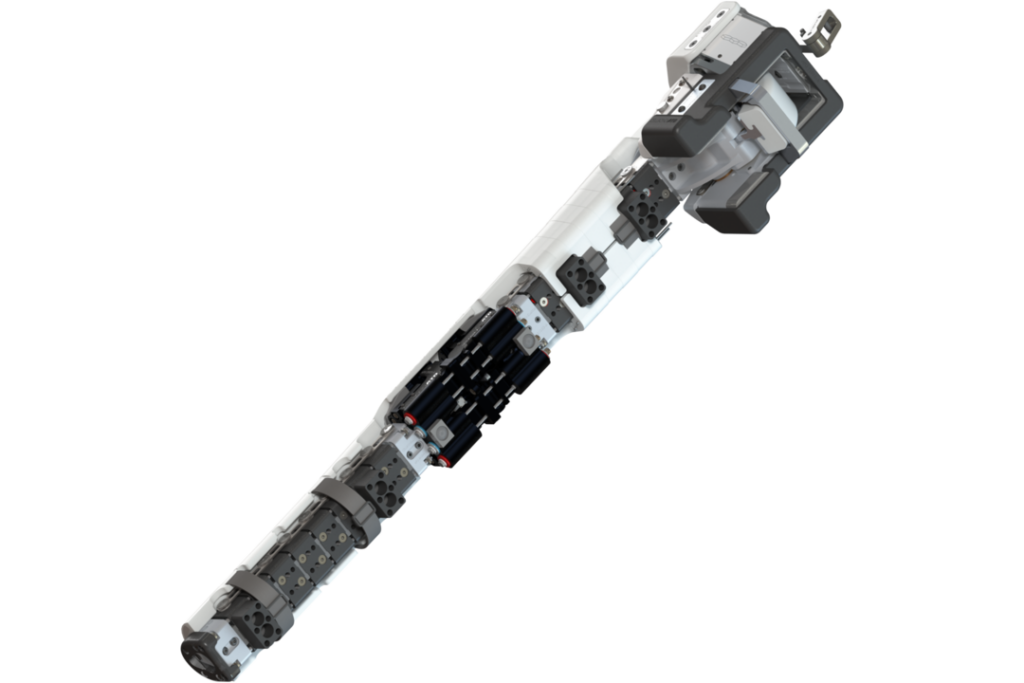
The aPLI is the latest and most advanced pedestrian legform impactor. While using many design principles for knee and flexible bones from the Flex-PLI, it is a completely new impactor design. Most noticeable feature compared to its predecessor is the upper mass which represents the loading from the lower torso into the femur. As such the aPLI can assess femur injuries next to knee and tibia injuries. Other updates include pusher blocks for stable launching, realistic impact shape, and rounded knee segments. These and other features reduce test variability and improve biofidelity compared to the Flex-PLI.
The standard aPLI is equipped with 18 channels including knee ligament elongations and bending moments in the femur and tibia bones. Cellbond offers the aPLI with various on-board data acquisition solutions.
Specifications
| Leg Length | Femur | Weight of the assembly* | Weight of the femur assembly | Weight of the knee assembly | Weight of the tibia assembly |
|---|---|---|---|---|---|
| 1096mm | 339mm | 24.7kg | 4.3kg | 2.8kg | 2.35kg |
*Includes upper mass and leg flesh.
Instrumentation
| Location | Instrumentation | Quantity | Description |
|---|---|---|---|
| Upper Mass | Accelerometer | 3 | Pelvis Acceleration X |
| Pelvis Acceleration Y | |||
| Pelvis Acceleration Z | |||
| Angular Rate Sensor | 3 | Pelvis Angular Velocity X | |
| Pelvis Angular Velocity Y | |||
| Pelvis Angular Velocity Z | |||
| Femur | Strain Gauge | 3 | Femur Upper Moment X |
| Femur Middle Moment X | |||
| Femur Lower Moment X | |||
| Knee | Accelerometer | 1 | Knee Acceleration Y |
| Angular Rate Sensor | 1 | Knee Angular Velocity | |
| String Potentiometer | 3 | Knee MCL Elongation | |
| Knee PCL Elongation | |||
| Knee ACL Elongation | |||
| Tibia | Strain Gauge | 4 | Tibia Upper Moment X |
| Tibia Middle Upper Moment X | |||
| Tibia Middle Lower Moment X | |||
| Tibia Lower Moment |
You must be logged in to post a comment.